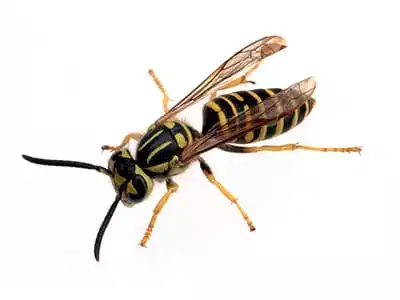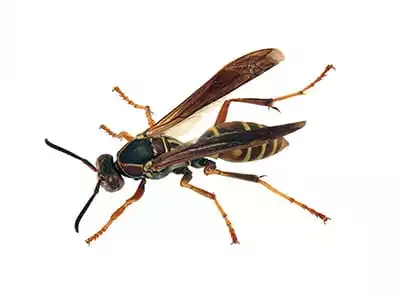Click To Call > (800) 966-7673
Wednesday, July 17, 2024
Confusion often arises between yellowjackets and wasps in the realm of stinging insects. Whether you're an outdoor enthusiast, homeowner, or simply curious about these buzzing creatures, understanding their distinctions can enhance your safety and knowledge. Let's delve into the nuances between yellowjackets and wasps and why it's important to know the difference.

Yellowjackets: These aggressive insects are often mistaken for bees due to their yellow and black markings. They are typically smaller and more streamlined than bees, with a distinctively defined waist.

Wasps: Wasps come in various shapes and sizes, but they generally have slender bodies with a narrow waist. Their colors can range from yellow and black to metallic blue or green.
Yellowjackets: Known for their ground-nesting habits, yellowjackets build papery nests in abandoned burrows or underneath structures. They are fiercely defensive of their nests and can sting multiple times.
Wasps: Wasps often build their nests in sheltered areas such as trees, attics, or eaves of buildings. Their nests are typically made from paper-like material and can grow in size over time.
Yellowjackets: These insects are highly social and live in colonies led by a queen. They are known for their aggressive defense of their nests, especially in late summer and early fall.
Wasps: While some species of wasps are social, others are solitary. Social wasps live in colonies with a queen and workers, whereas solitary wasps live and breed alone.
Yellowjackets: Primarily carnivorous, yellowjackets feed on other insects and sugary substances like nectar. They are also attracted to human food, making them common pests at outdoor gatherings.
Wasps: Wasps are versatile predators that feed on a variety of insects and can be beneficial for controlling pest populations in gardens. They also consume nectar and honeydew.
Understanding the nuances between yellowjackets and wasps is more than a matter of curiosity—it’s about safety and effective pest management. Yellowjackets, with their aggressive nature and tendency to nest near humans, pose a greater risk of stings, especially when disturbed. On the other hand, wasps, while also capable of stinging, are less likely to attack unless provoked.
For homeowners and outdoor enthusiasts alike, recognizing the signs of a nest and knowing when to seek professional pest control services can prevent potentially dangerous encounters. Rose Pest Solutions emphasizes the importance of proactive pest management to mitigate risks and ensure a safe environment for all.
By staying informed and respecting their role in the ecosystem, you can enjoy the beauty of nature while mitigating any risks associated with these fascinating insects. Remember, knowledge is your best tool when it comes to navigating encounters with yellowjackets and wasps.
If you discover a wasp or yellowjacket nest, it's best to contact a professional to have it removed or eliminated. Click here to find your nearest Rose service center or contact us at (800) 966-ROSE to schedule your service.